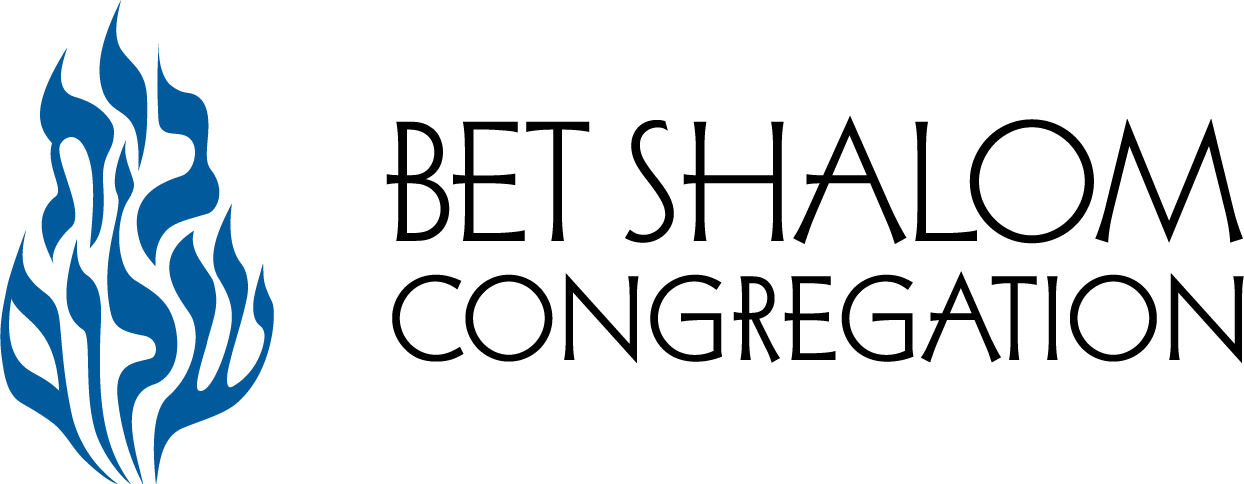Bet Shalom Religious School - Hebrew Program
“Rather than spending years of Hebrew and prayer rote practice, this approach for learning Hebrew builds foundational knowledge while suddenly opening up time for more compelling Jewish learning.” -Hebrew Through Movement Philosophy
Three years ago, Bet Shalom implemented “Hebrew Through Movement”, a language acquisition program that exposes students to Hebrew sounds and movements as a way to create meaning. Research shows that this aural foundation for Hebrew creates a more successful shift to decoding and reading, especially when reading is taught at a developmentally appropriate age. Similar to how people spend 5-6 years hearing, responding to, and speaking (i.e., building sounds) before learning to read, our students also need to hear, respond to, and recite Hebrew before being taught to read it.
Therefore, rather than teaching decoding starting in 2nd grade, as previously done, we are going to delay this until approximately 5th grade. While this is a large shift from what “has always been done” in religious school settings, we are convinced that it will not only yield higher success in decoding when it comes time for B’nai Mitzvah, but will also increase student engagement and broaden the overall religious school experience for all students.
What will Hebrew look like at Bet Shalom this year?
All students in grades preschool-5th grade will learn Hebrew and will be exposed to letters and sounds through “Letter of the Week” and “Jewish Vocabulary of the Week.”
All students in preschool-5th grade will work with a Hebrew Specialist every Sunday session on hearing, learning, speaking, and interacting with the Hebrew language.
5th-7th Grade B'nai Mitzvah Prep Classes: Students in these grades will have an added course related to Hebrew decoding and B'nai Mitzvah preparation. Depending on when B'nai Mitzvah dates occur, students will be assigned a course to take such as Hebrew Prayer Reading, Hebrew Boot Camp, Trope, or a B'nai Mitzvah cohort.
Please read on if you would like to understand the metrics, data, and results that led us to pushing back the grades in which we spend concentrated class time on Hebrew decoding.
First, it is important to know our goals for teaching students Hebrew, which go beyond simply preparing students to read prayers and Torah. Our hope is that:
Students will feel a sense of pride and connection to Hebrew culture, history, and Jewish peoplehood through an appreciation and knowledge of the Hebrew language.
Students will feel comfortable and confident interacting with other Jews in the community by understanding and appropriately using core Hebrew phrases in a natural way.
Students will feel comfortable and confident reading Hebrew.
Data shows that Hebrew reading fluency and accuracy actually improved within this “sound-to-print” model (where decoding is delayed), but the question is, “Why?”
First, what is needed to read Hebrew?
Students need a strong aural foundation of the language-they need to hear Hebrew for a long time before starting to decode.
Students need knowledge of many Hebrew words so when they sound things out, they are able to make connections to previous knowledge.
Students need motivation (a clear goal).
Students need consistency.
By exposing students to sounds and words, “Hebrew Through Movement” will build the “strong aural foundation of the language” and give students the “knowledge of many Hebrew words” in which to connect those they learn to decode later on. To help with this, Hebrew will be embedded in all areas of religious school (class, Shira, T’filah, “Hebrew Through Movement,” etc.) in order to increase exposure and comprehension.
In regard to the “motivation” students need in order to learn Hebrew, we have found that a 2nd grader is often excited to learn Hebrew because it is new and is what the older kids are doing. However, this excitement often wanes and the only motivating factor is B’nai Mitzvah, which is still years away. Therefore, students in 3rd, 4th, and 5th grade often fail to see the benefit (or need) of learning to read Hebrew, and the motivation is lost. When students are a year away from B’nai Mitzvah they suddenly bring a maturity for the learning process and a stronger motivation for reading Hebrew. This together with intense reading practice in the classroom, B’nai Mitzvah cohorts, and one-on-one tutoring, allows students in 5th and 6th grade to learn to decode at a faster rate and with more success and enjoyment. So, as stated on the Hebrew Through Movement website, “rather than spending years of Hebrew and prayer rote practice, this approach for learning Hebrew builds foundational knowledge while suddenly opening up time for more compelling Jewish learning.”
Finally, the need for consistency to learn to read Hebrew is difficult within the structure of our part-time setting. Students come 1-2 days per week, have occasional absences, observe holidays and breaks throughout the year, and take 3 months off for summer break. This “sound-to-print” philosophy has been designed specifically for our setting in giving the foundation of the language that students need. That foundation will help them learn to decode much quicker in the two years before becoming B’nai Mitzvah. We are so excited to implement these strategies and are excited to see the success and enjoyment our students will experience. Please contact me with any questions you may have regarding our Hebrew program.
Ali King
